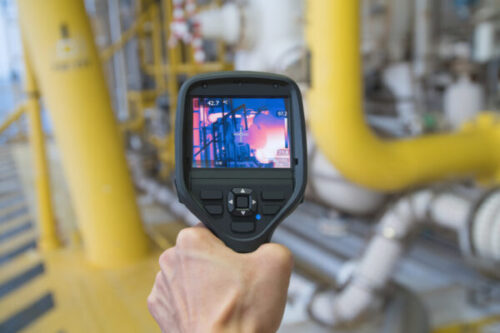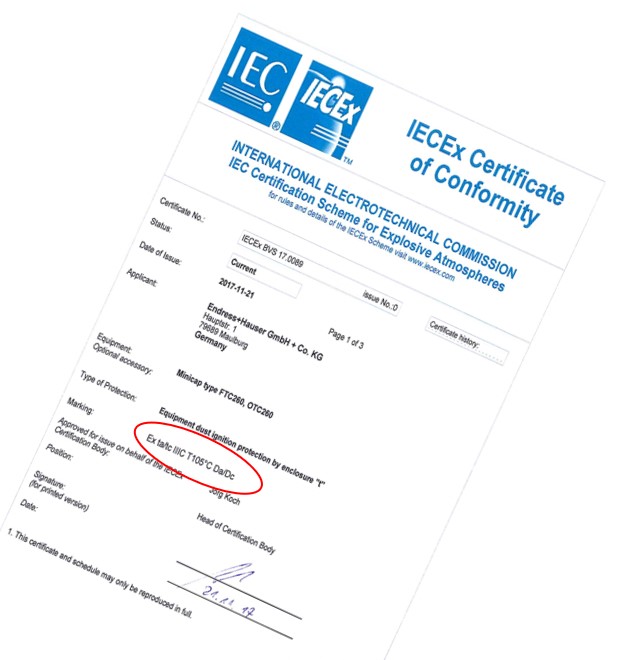8 Easy Facts About Roar Solutions Described
8 Easy Facts About Roar Solutions Described
Blog Article
The Single Strategy To Use For Roar Solutions
Table of ContentsRoar Solutions Things To Know Before You BuySome Ideas on Roar Solutions You Need To Know5 Simple Techniques For Roar Solutions
In such an atmosphere a fire or surge is feasible when three basic conditions are fulfilled. This is often described as the "unsafe area" or "combustion" triangular. In order to safeguard installations from a potential surge a technique of analysing and identifying a possibly dangerous area is called for. The objective of this is to make sure the appropriate selection and installment of devices to ultimately protect against a surge and to guarantee safety of life.
(https://www.startus.cc/company/roar-solutions)
No equipment should be installed where the surface temperature of the devices is higher than the ignition temperature level of the offered threat. Below are some usual dirt hazardous and their minimum ignition temperature. Coal Dust 380C 225C Polythene 420C (thaws) Methyl Cellulose 420C 320C Starch 460C 435C Flour 490C 340C Sugar 490C 460C Grain Dirt 510C 300C Phenolic Material 530C > 450C Aluminium 590C > 450C PVC 700C > 450C Residue 810C 570C The chance of the threat existing in a focus high adequate to create an ignition will certainly differ from place to place.
In order to categorize this risk a setup is divided into areas of threat relying on the quantity of time the unsafe exists. These areas are referred to as Zones. For gases and vapours and dirts and fibers there are 3 zones. Area 0 Area 20 A hazardous environment is extremely likely to be present and might be existing for extended periods of time (> 1000 hours per year) and even constantly Zone 1 Area 21 An unsafe ambience is possible yet not likely to be present for long durations of time (> 10 450 C [842 F] A classification of T6 means the minimal ignition temperature level is > 85 C [185 F] Dangerous location electric equipment possibly developed for use in greater ambient temperatures. This would certainly suggested on the rating plate e.g. EExe II C T3 Ta + 60C( This suggests at 60C ambient T3 will not be exceeded) T1 T1, T2, T3, T4, T5, T6 T2 T2, T3, T4, T5, T6 T3 T3, T4, T5, T6 T4 T4, T5, T6 T5 T5, T6 T6 T6 A T Course score of T1 indicates the optimum surface temperature produced by the tool at 40 C is 450 C. Thinking the connected T Class and Temperature level rating for the tools are suitable for the location, you can always make use of a tool with a much more strict Division score than needed for the area. There isn't a clear response to this concern sadly. It really does depend upon the kind of equipment and what fixings require to be carried out. Equipment with particular test treatments that can not be carried out in the field in order to achieve/maintain 3rd party score. Must come back to the factory if it is prior to the equipment's solution. Area Fixing By Authorised Worker: Complex screening may not be required nonetheless particular treatments may need to be adhered to in order for the tools to keep its third party score. Authorised personnel must be utilized to perform the job appropriately Repair should be a like for like substitute. New element need to be taken into consideration as a straight replacement calling for no special screening of the equipment after the repair service is full. Each piece of equipment with a harmful ranking ought to be reviewed separately. These are outlined at a high degree listed below, but also for even more comprehensive info, please refer straight to the standards.
Roar Solutions Can Be Fun For Anyone
The equipment register is a comprehensive database of equipment documents that consists of a minimum set of areas to identify each item's location, technological parameters, Ex-spouse category, age, and ecological data. The proportion of Detailed to Shut inspections will be figured out by the Devices Danger, which is analyzed based on ignition threat (the probability of a resource of ignition versus the possibility of a combustible environment )and the dangerous area classification
( Zone 0Area 1, or 2). Implementing a durable Risk-Based Evaluation( RBI )technique is crucial for guaranteeing compliance and security in handling Electric Equipment in Hazardous Areas( EEHA).
Everything about Roar Solutions

In terms of eruptive risk, a harmful area is an environment in which an eruptive environment exists (or may be anticipated to be existing) in amounts that need special safety measures for the construction, installment and use tools. eeha. In this article we discover the obstacles encountered in the work environment, the risk control procedures, and the needed expertises to work safely
It is a consequence of modern-day life that we manufacture, keep or deal with a series of gases or liquids that are deemed flammable, and a series of dusts that are regarded flammable. These materials can, in certain conditions, create explosive environments and these can have major and tragic repercussions. Many of us are familiar with the fire triangular remove any type of among the three components and the fire can not occur, however what does this mean in the context of hazardous areas? When damaging this down right into its easiest terms it is basically: a mix of a certain quantity of release or leak of a specific material or material, combining with ambient oxygen, and the visibility of a resource of ignition.
In the majority of instances, we can do little regarding the levels of oxygen airborne, but we can have considerable influence on resources of ignition, as an example electrical equipment. Hazardous areas are recorded on the harmful location category illustration and are recognized on-site by the triangular "EX-SPOUSE" indicator. Below, among various other key details, areas are split right into 3 kinds relying on the danger, the probability and period that an explosive environment will exist; Zone 0 or 20 is deemed one of the most harmful and Zone 2 or 22 is deemed the least.
Report this page